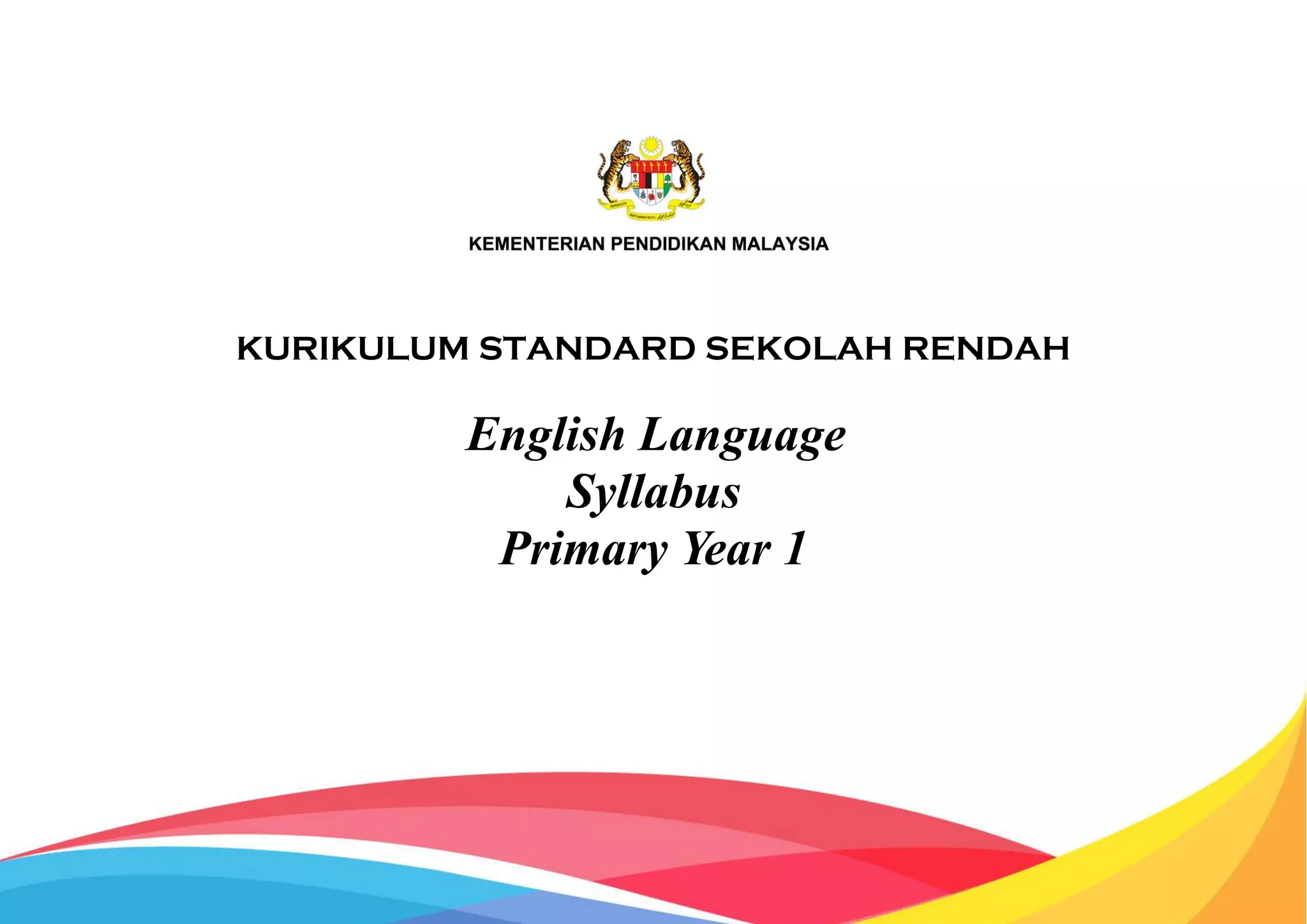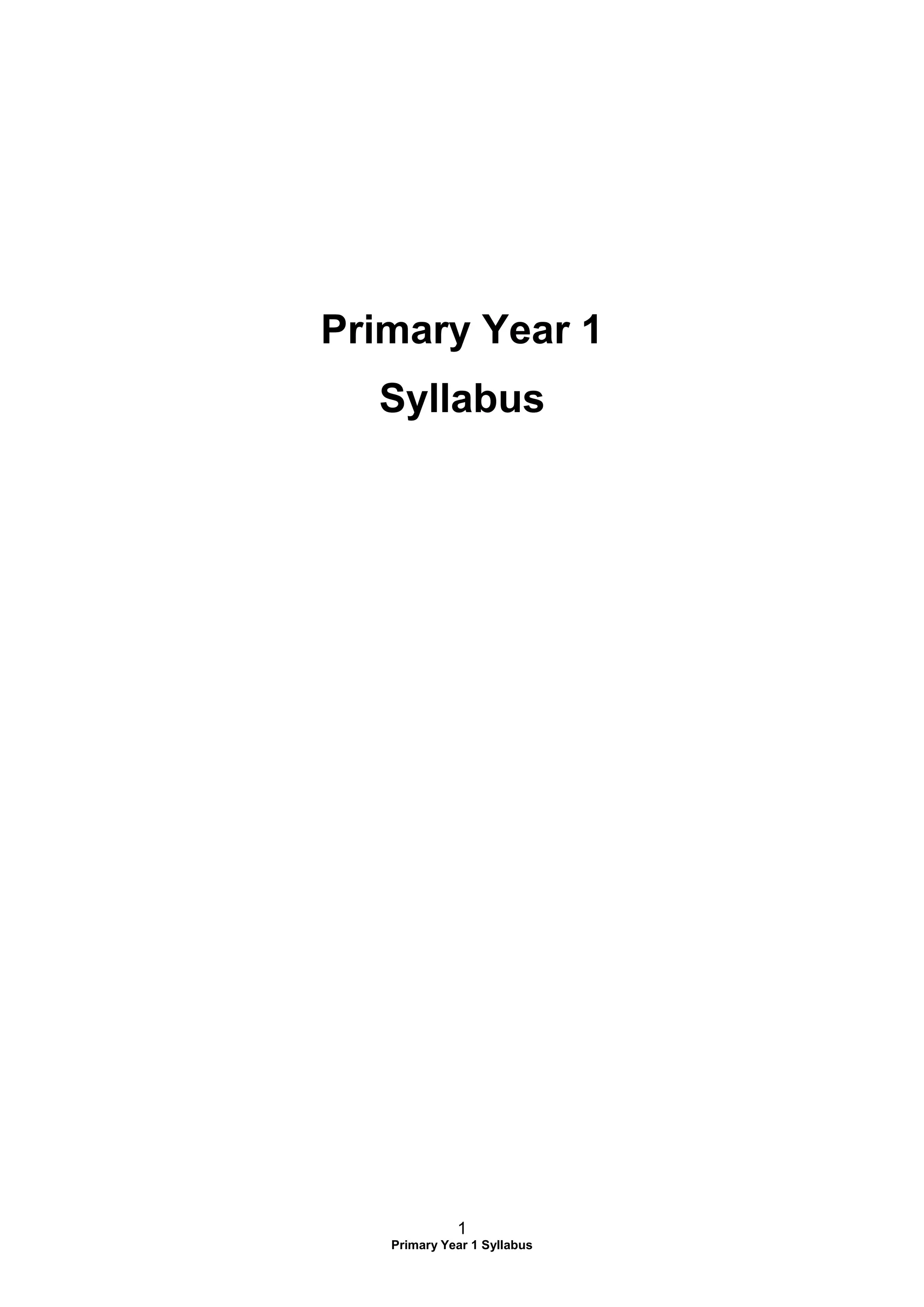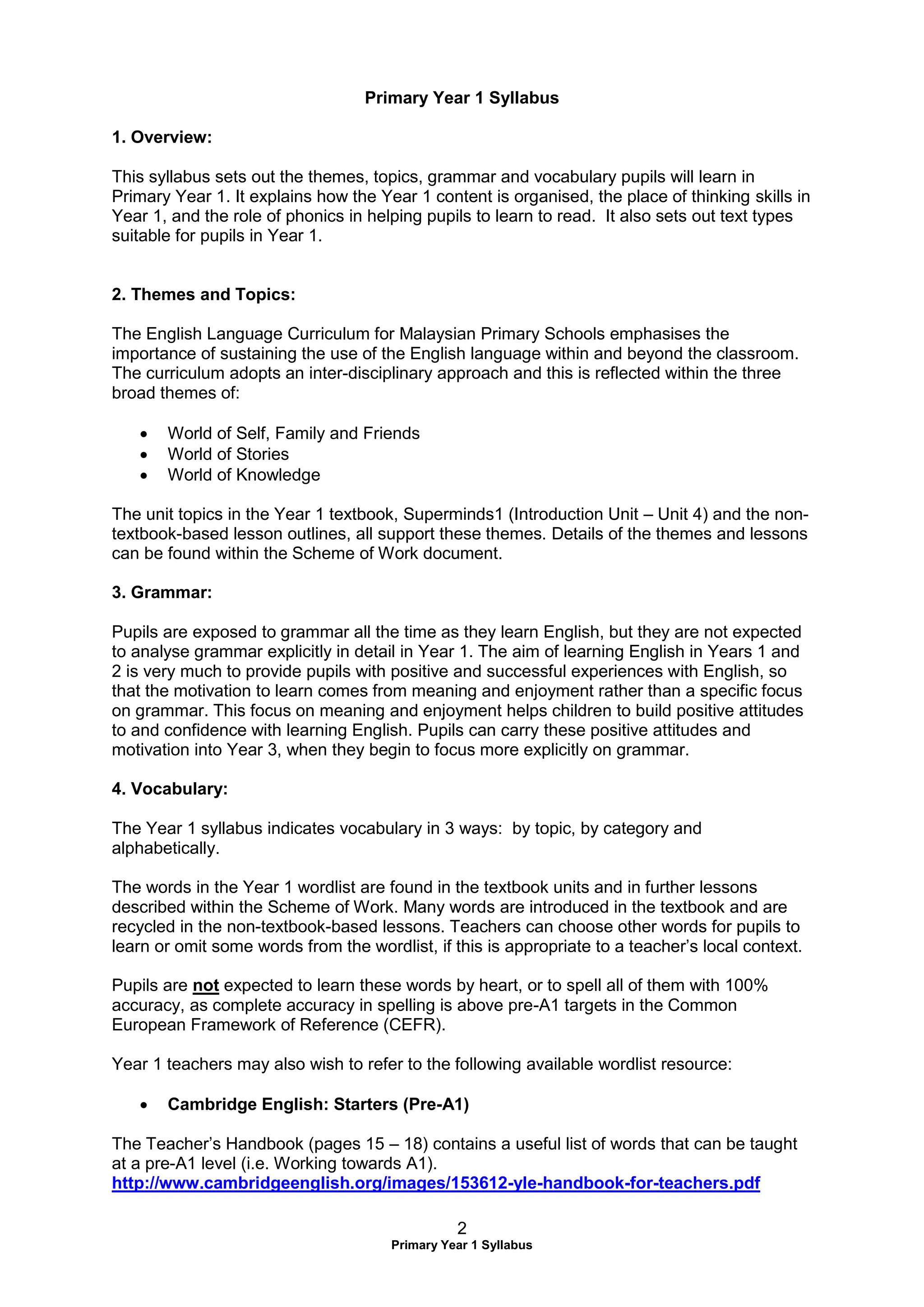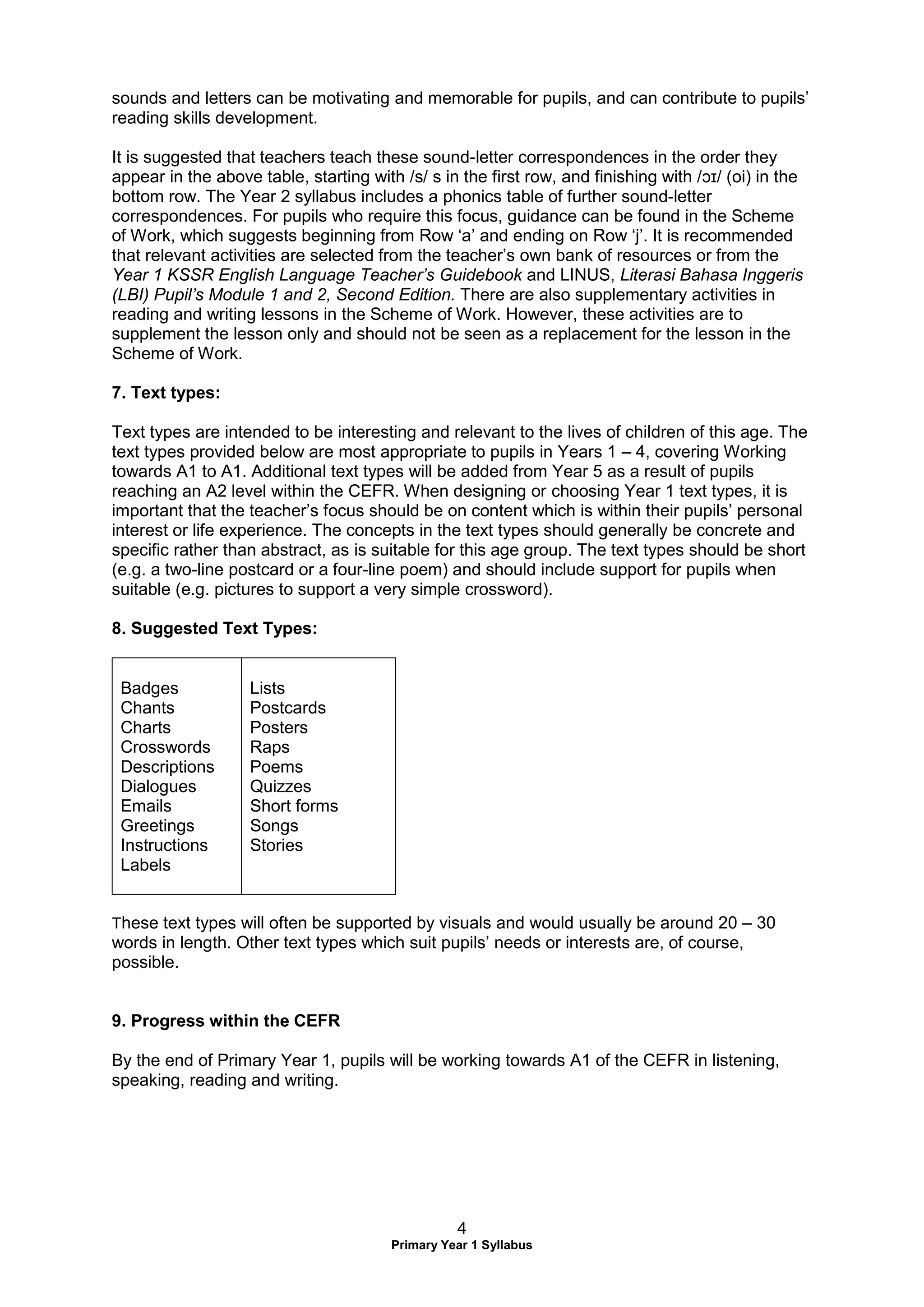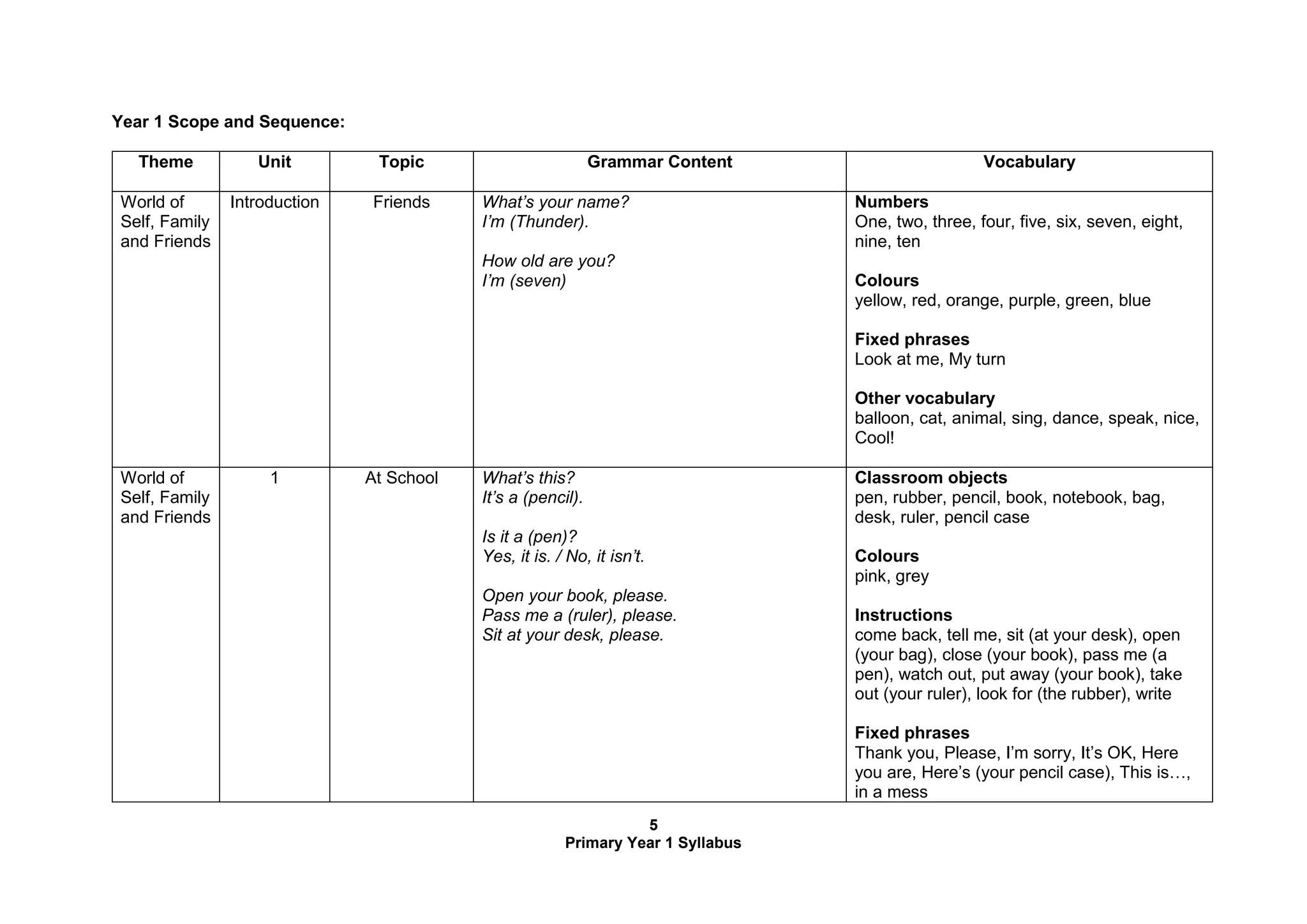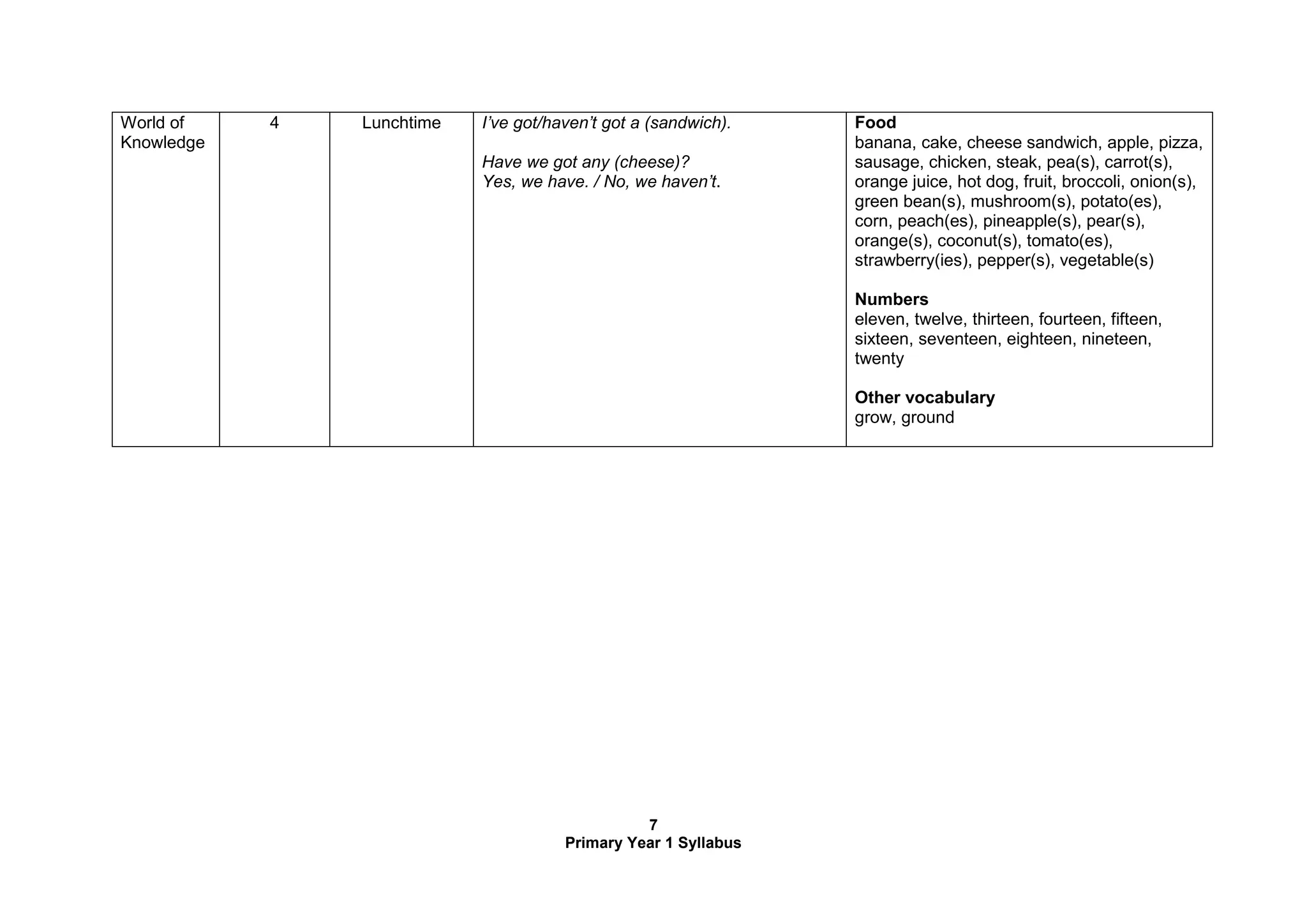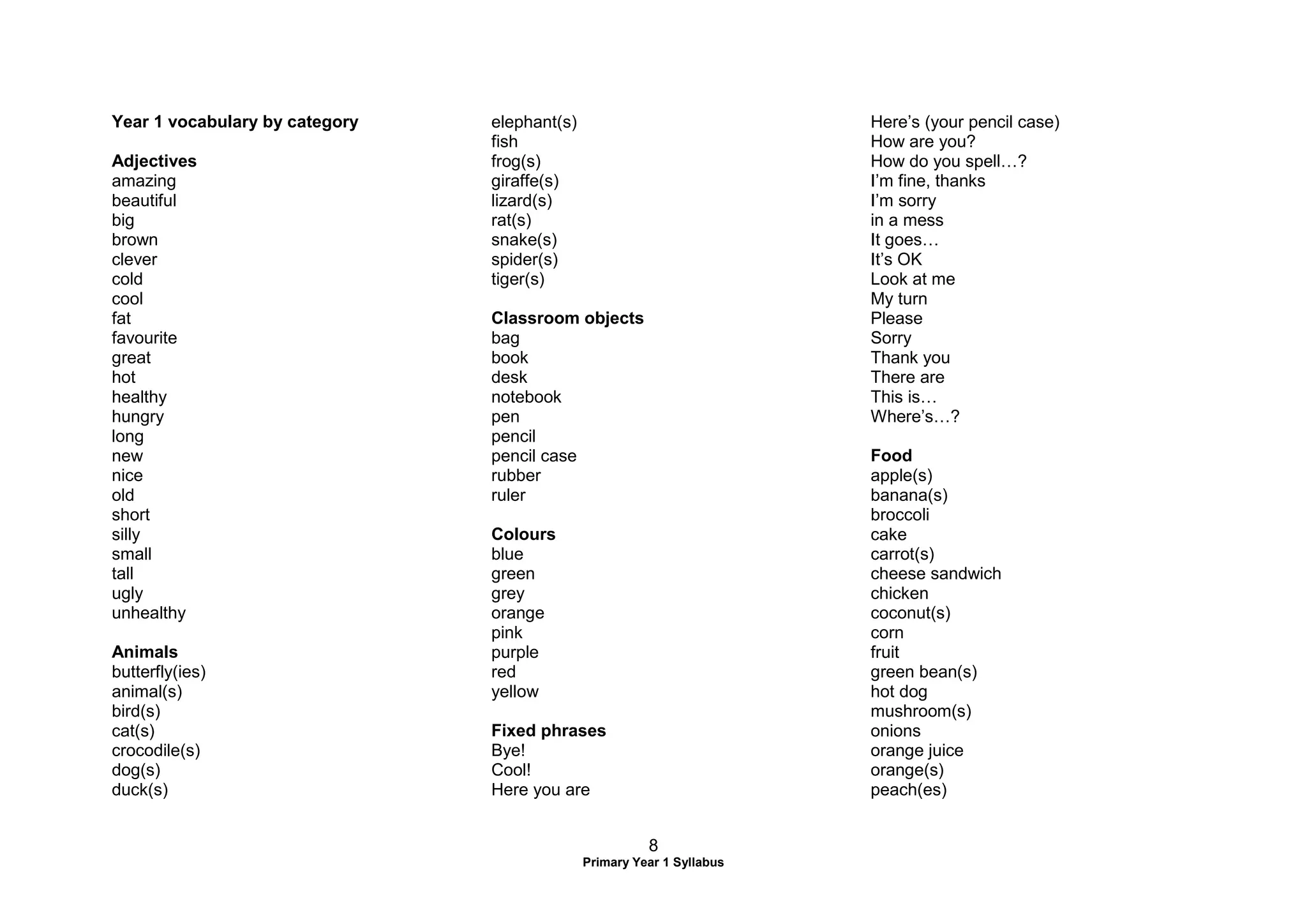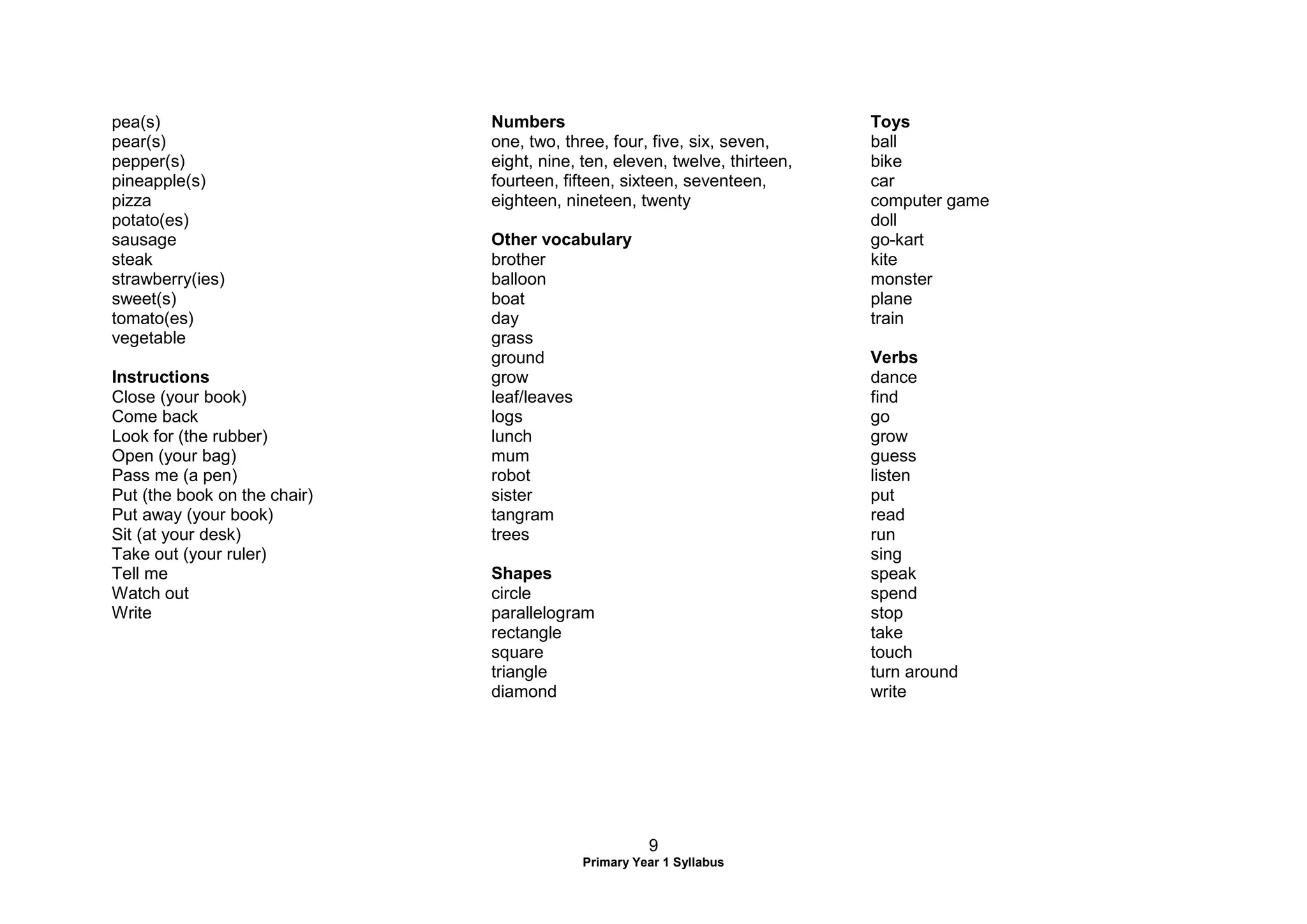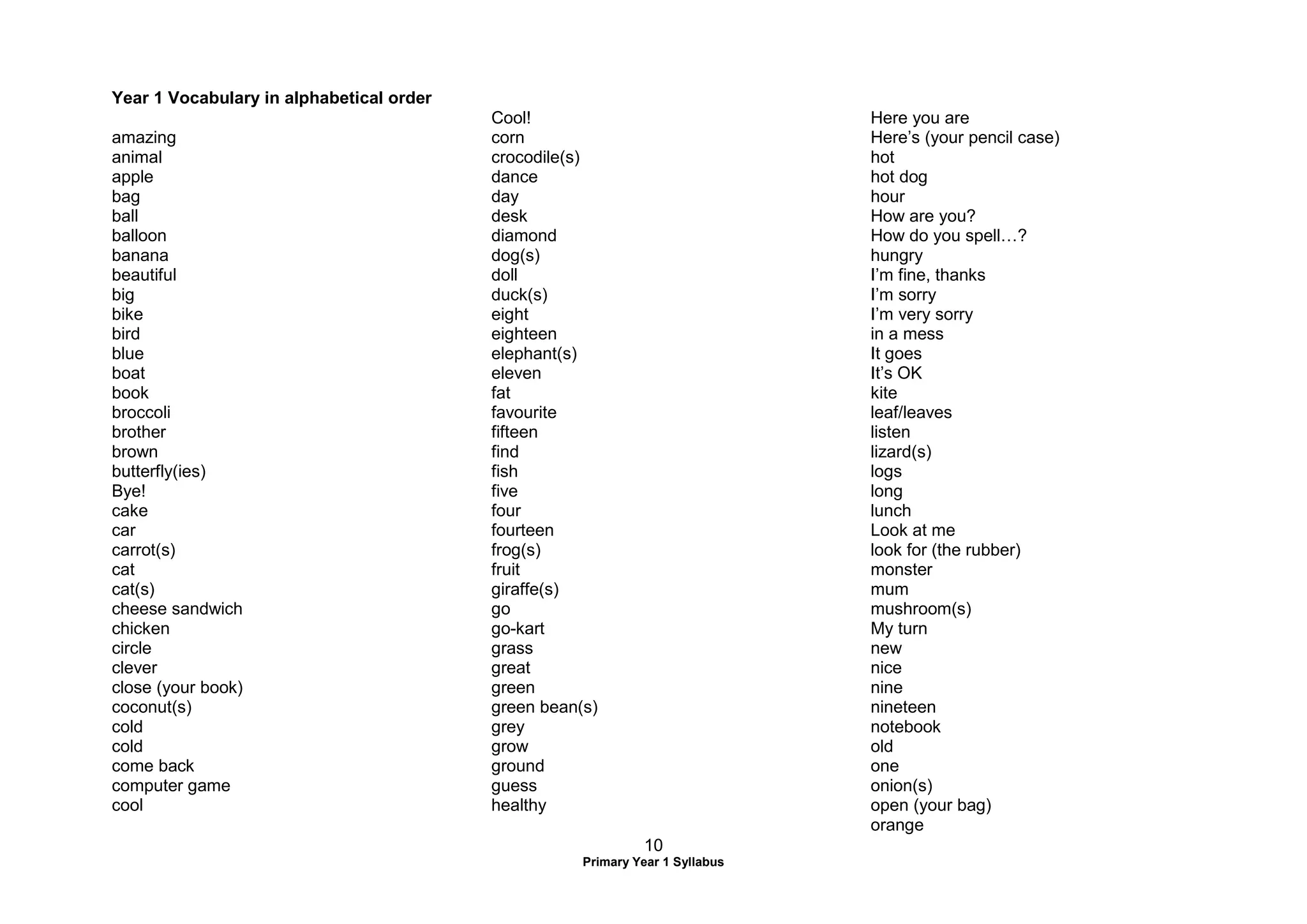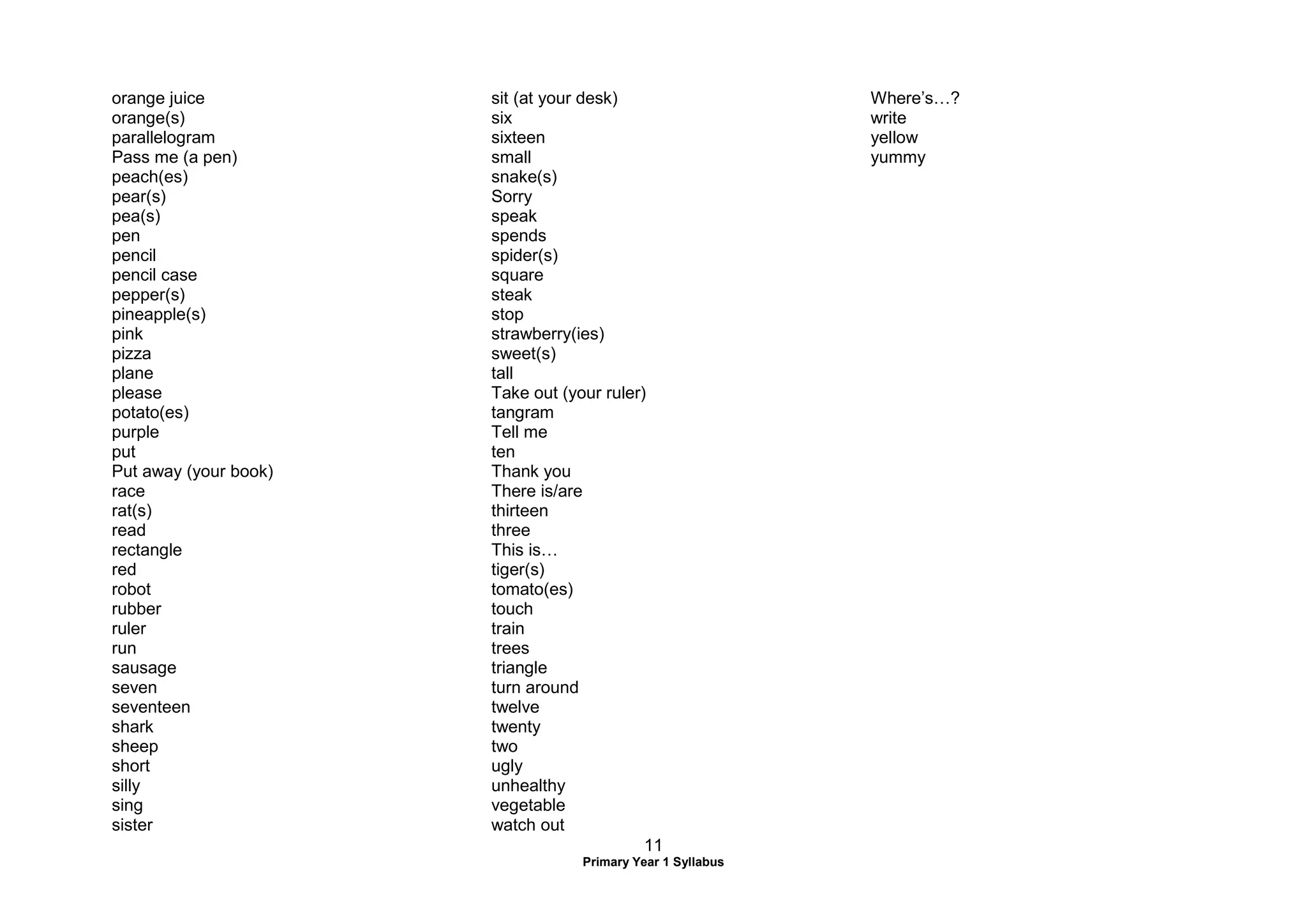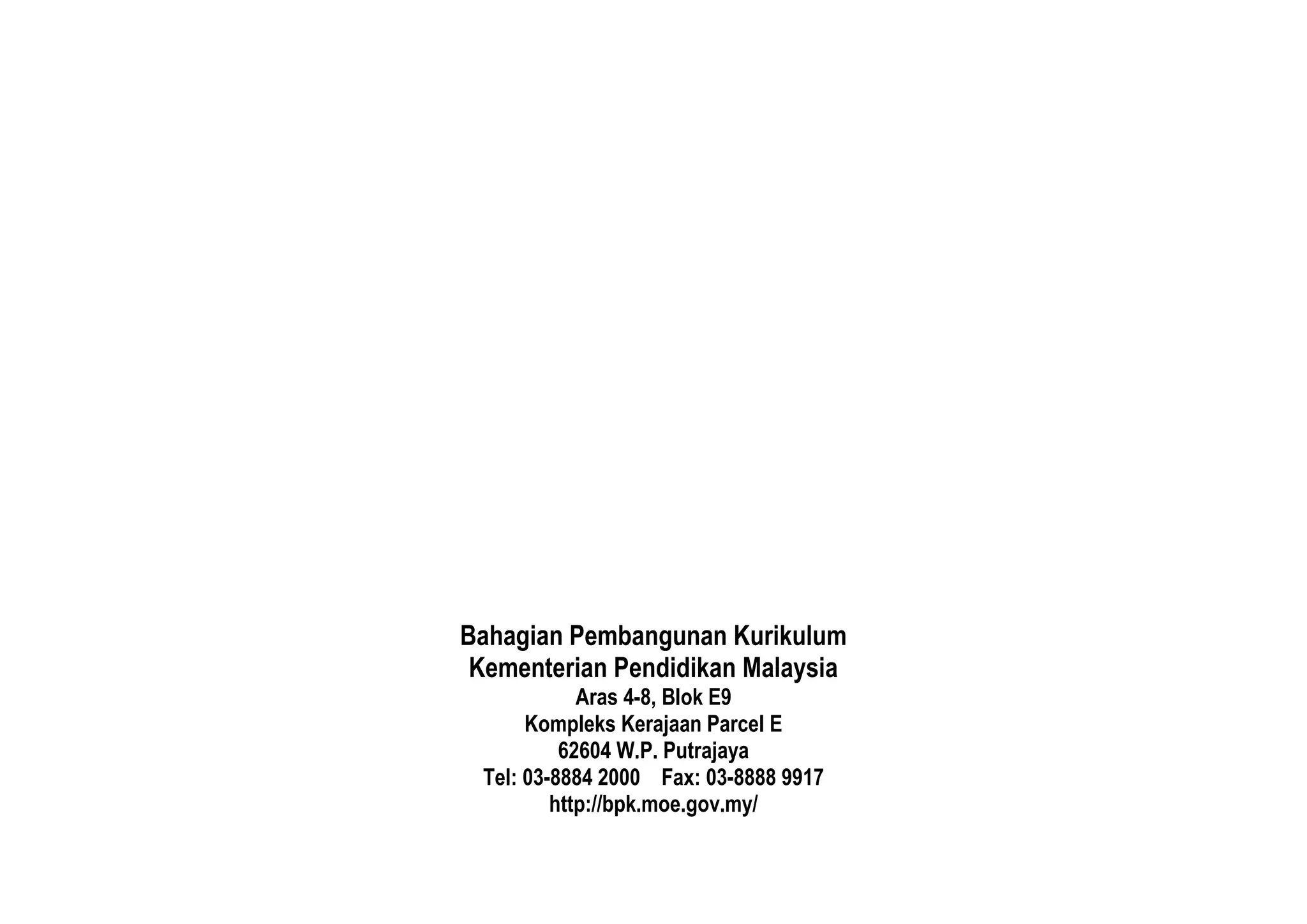This document provides an overview of the English Language syllabus for Primary Year 1 in Malaysian schools. It covers several key areas:
- Themes and topics are organized around three broad themes: world of self, family and friends; world of stories; and world of knowledge.
- Grammar is not explicitly taught but learned through exposure. The focus is on meaning and enjoyment to build positive attitudes.
- Vocabulary is indicated by topic, category and alphabetically from the textbook and other lessons.
- Thinking skills are developed through tasks that encourage hypothesizing, interpreting, analyzing, evaluating and creative problem-solving.
- Phonics teaching follows a sound-letter correspondence table to help pupils learn
